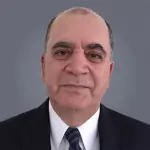

Removing biological growth in landfill leachate collection pipes is an important maintenance measure to keep the pipes in operable condition. High-pressure jet cleaning of the pipes on a regular schedule is performed in accordance with best practices and regulatory policy. For example, in Florida, solid waste rules require leachate collection pipes to be either jet cleaned every five years or videoed to confirm that the pipes are in operational condition. Of course, if the video shows that cleaning is necessary, the operator performs the maintenance and submits a report to the appropriate agency.
The spent jetting liquids contain a mix of calcite and microorganisms that have been removed from pipe walls and perforations. The liquid mixture flows to the lowest point in the pipe and enters the sump medium, which is typically composed of one to three-inch size rock. A drawback of jet cleaning is that when the pipes are cleaned, the spent jetting liquids enter the sump medium, thereby using essential leachate storage space in the sump. The calcite and microorganisms that were removed from the leachate piping are now present in the sump and will reduce the sump capacity and cause bottlenecks within the perforations in the riser pipe(s). Over time, this buildup will prevent the flow of leachate in the sump into the riser pipe. Without flow into the riser pipe, leachate removal from the sump becomes impossible, causing expensive operations and compliance issues for the landfill operator.
Clogging of the sump medium is a slow process; many sumps do not show indication of the impact of buildup for years. Landfill operators typically don’t use jet cleaning equipment equipped with vacuum features to remove the spent liquids from the pipe during cleaning. SCS recommends that this potential issue is discussed with the cleaning contractor in advance to account for the problems that can occur. For shallow landfills, contractors could provide a vacuum line inserted into the cleanout riser to remove the spent liquids as the pipe is cleaned. For deep landfills, the cleaning contractor can provide a temporary pump inserted inside the riser to remove the spent liquids.
To prevent excessive biological growth, jet cleaning of the riser pipes every time the leachate collection pipes are cleaned will significantly reduce clogging of the riser pipe perforations. Unmaintained riser pipes block leachate from entering the riser, preventing liquid removal and causing compliance issues when found.
Ask the author a question: Dr. Ali Khatama
By Ali Khatami, Ph.D, P.E., SCS Engineers National Expert
Leachate seeping out of a landfill slope can be a major issue during the active life of a landfill, and waste operators undertake significant efforts to control and manage it. Uncontrolled seeps can cause soil erosion on the slope, odor issues, and unpleasant scenery on the landfill slope which is visible to adjacent public roads or properties. Leachate can also travel beyond the liner boundaries into perimeter ditches.
Leachate also can seep below the final cover, and that causes a different set of problems. Leachate seeps below final landfill covers are rarely discussed because of the general consensus that they become inactive after construction of the final cover system. That may be true under certain conditions, but very often, leachate seeps remain active as long as the source of water remains active and continues discharging through the seep locations. Leachate seeps below final covers can potentially:
If the final cover geomembrane is not welded to the bottom liner geomembrane, leachate seeping to the toe of the slope can reach the landfill perimeter ditch and contaminate the surface water, or it can percolate into the ground and cause ground water contamination that may be detected in nearby groundwater monitoring wells. Leachate seep also may enter the perimeter berm structure and saturate the berm to the point that the stability of the landfill slope becomes a concern.
If the final cover geomembrane is welded to the bottom liner geomembrane, the only way to address the accumulation of leachate under the cover at the toe of the slope is to open the geomembrane, remove the leachate, and close the geomembrane again. However, this process does not solve the seep problem, which will continue to recur.
SCS has designed various leachate toe drain systems to collect and dispose of leachate that flows below the final cover geomembrane. Leachate toe drains have become a standard feature in the final cover designs for some of our clients who have experienced the benefits of the system.
If you have leachate seep issues at your landfill, please contact SCS. We can develop a design specific to your landfill and the conditions at your facility. We also provide construction recommendations and a preliminary cost estimate for implementation of the system. SCS has extensive experience with the permitting of these systems; we prepare modification applications for permitting purposes and obtain approval from the state regulatory agency. SCS can also prepare the construction plans. We also offer design-build options, employing our SCS Field Services Construction group to construct the system, which often can be a cost-effective way to implement your system.
